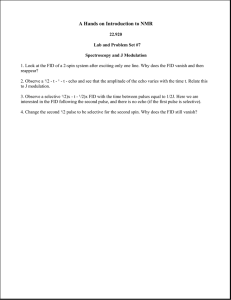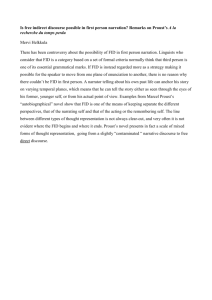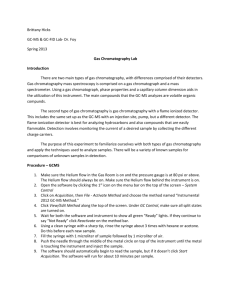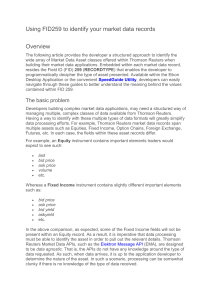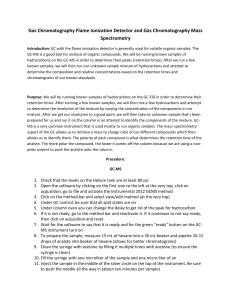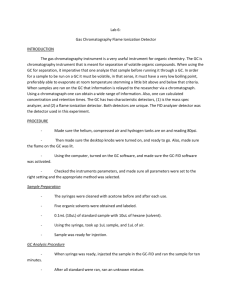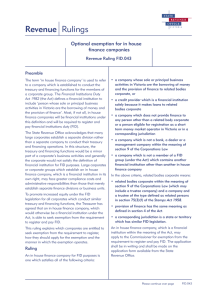GC-MS/FID
advertisement
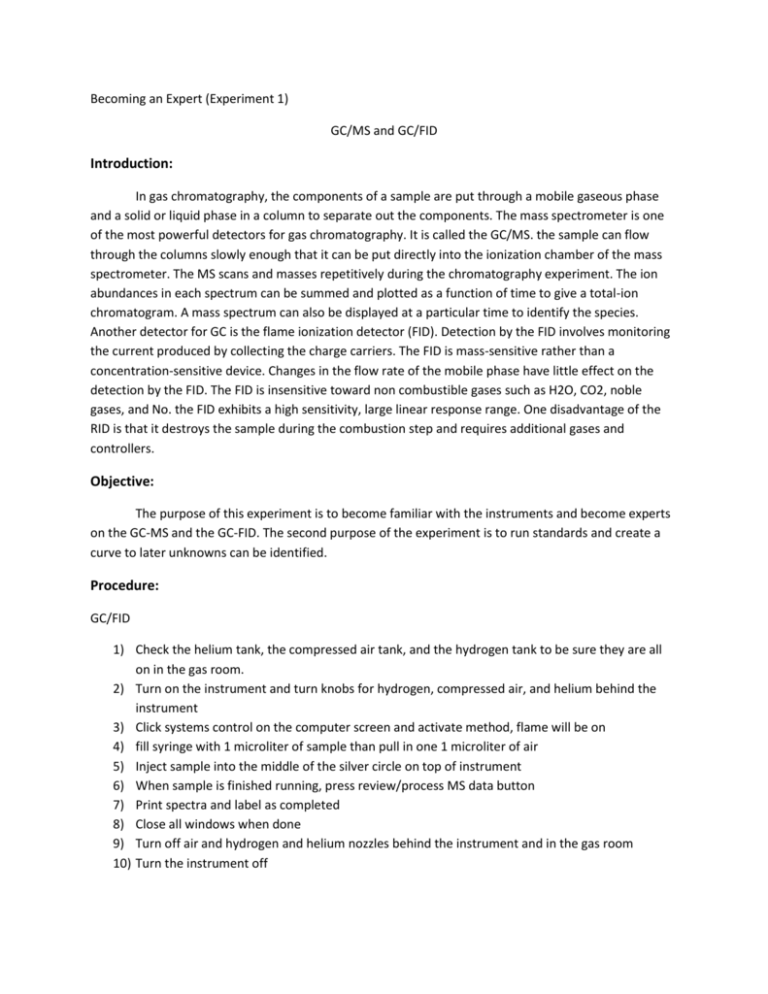
Becoming an Expert (Experiment 1) GC/MS and GC/FID Introduction: In gas chromatography, the components of a sample are put through a mobile gaseous phase and a solid or liquid phase in a column to separate out the components. The mass spectrometer is one of the most powerful detectors for gas chromatography. It is called the GC/MS. the sample can flow through the columns slowly enough that it can be put directly into the ionization chamber of the mass spectrometer. The MS scans and masses repetitively during the chromatography experiment. The ion abundances in each spectrum can be summed and plotted as a function of time to give a total-ion chromatogram. A mass spectrum can also be displayed at a particular time to identify the species. Another detector for GC is the flame ionization detector (FID). Detection by the FID involves monitoring the current produced by collecting the charge carriers. The FID is mass-sensitive rather than a concentration-sensitive device. Changes in the flow rate of the mobile phase have little effect on the detection by the FID. The FID is insensitive toward non combustible gases such as H2O, CO2, noble gases, and No. the FID exhibits a high sensitivity, large linear response range. One disadvantage of the RID is that it destroys the sample during the combustion step and requires additional gases and controllers. Objective: The purpose of this experiment is to become familiar with the instruments and become experts on the GC-MS and the GC-FID. The second purpose of the experiment is to run standards and create a curve to later unknowns can be identified. Procedure: GC/FID 1) Check the helium tank, the compressed air tank, and the hydrogen tank to be sure they are all on in the gas room. 2) Turn on the instrument and turn knobs for hydrogen, compressed air, and helium behind the instrument 3) Click systems control on the computer screen and activate method, flame will be on 4) fill syringe with 1 microliter of sample than pull in one 1 microliter of air 5) Inject sample into the middle of the silver circle on top of instrument 6) When sample is finished running, press review/process MS data button 7) Print spectra and label as completed 8) Close all windows when done 9) Turn off air and hydrogen and helium nozzles behind the instrument and in the gas room 10) Turn the instrument off GC/MS 1) Check the levels on the helium tank in the gas room and make sure it is on 2) Open the software, click on acquisition, then activate a method that works for the sample 3) Clean syringe, then fill syringe with one microliter of the sample, and then pull in another microliter of air 4) Inject the sample into the middle of the silver circle on top of the instrument 5) If the program does not start to run on its own, click start acquisition and wait until the end time 6) When the spectrum is complete, click on the last icon on the right. Right click on the main peak and click Library Search Spectrum 7) Make sure you save the file in a location and under a name you know and print the spectrum 8) Activate the method “DailyChecks” 9) Close all windows when done but do not turn off instrument Data: All spectrums are in the lab notebook Conclusion: We ran all our standards and the unknown on the GC-FID and we ran all but two standards and the unknown on the GC-MS. We had trouble understanding you needed to only choose one method on the GC-MS and then refine the method to make the peak the best. We changed the temperature in the oven from 325o to 300o and we got a really nice and clean peak. We ran another standard but there was more noise so we lowered the temperature in the oven again to 290o and received a decent peak. We returned the temperature back up to 300o to run the rest of our standards. In the GC-FID we used a test method that worked for all the standards. We lowered the temperature change per minute from 50 to 25 before we ran the unknown through because we wanted the sample to flow slower and separate the components out more. In the GC-MS unknown, we identified the four unknown peaks as tetradecane, chloroform, octane, and n-butanol. In the GC-FID unknown, we identified the only peak as chloroform because the unknown peak had an identical retention time as the chloroform standard. Problems we encountered were lots of noise on the MS graphs before we realized you can change the temperature in the method, and also we had to make sure the syringe was actually getting sample in and that we were injecting it right.
